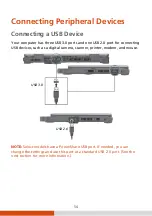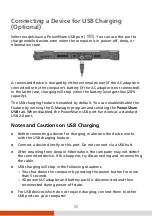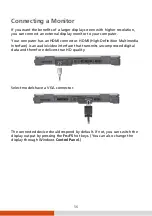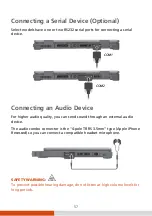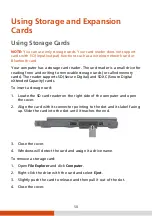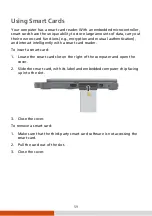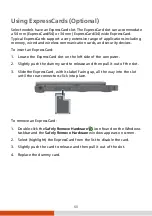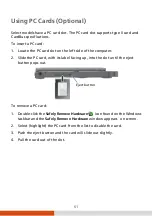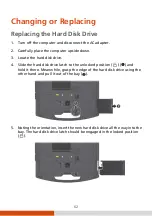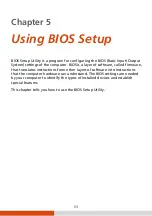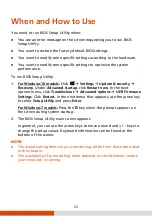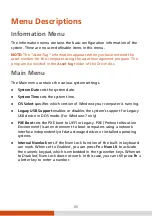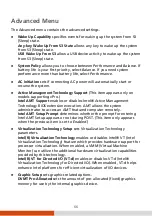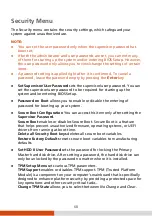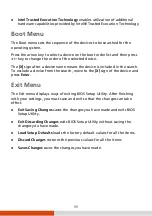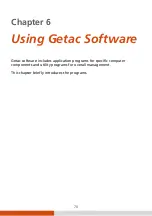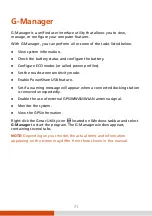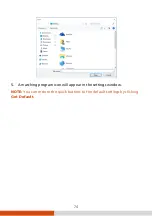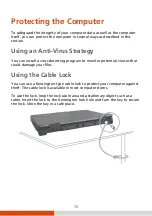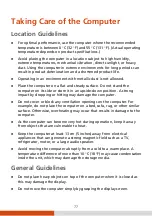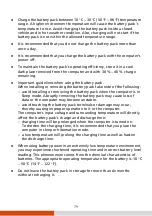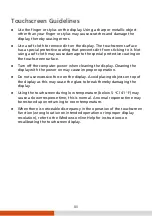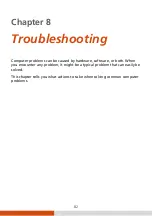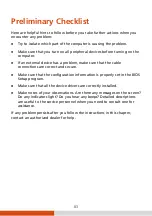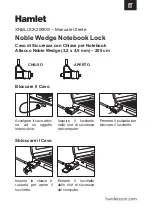
68
Security Menu
The Security menu contains the security settings, which safeguard your
system against unauthorized use.
NOTE:
You can set the user password only when the supervisor password has
been set.
If both the administrator and user passwords are set, you can enter any
of them for starting up the system and/or entering BIOS Setup. However,
the user password only allows you to view/change the settings of certain
items.
A password setting is applied right after it is confirmed. To cancel a
password, leave the password empty by pressing the
Enter
key.
Set Supervisor/User Password
sets the supervisor/user password. You can
set the supervisor/user password to be required for starting up the
system and/or entering BIOS Setup.
Password on Boot
allows you to enable or disable the entering of
password for booting up your system.
Secure Boot Configuration
You can access this item only after setting the
Supervisor Password
.
Secure Boot
enables or disables Secure Boot. Secure Boot is a feature
that helps prevent unauthorized firmware, operating systems, or UEFI
drivers from running at boot time.
Delete all Security Boot keys
deletes all secure boot variables.
Restore Factory Defaults
resets secure boot variables to manufacturing
defaults.
Set HDD 0 User Password
sets the password for locking the Primary
Master hard disk drive. After setting a password, the hard disk drive can
only be unlocked by the password no matter where it is installed.
TPM Setup Menu
sets various TPM parameters.
TPM Support
enables or disables TPM support. TPM (Trusted Platform
Module) is a component on your computer’s mainboard that is specifically
designed to enhance platform security by providing a protected space for
key operations and other security critical tasks.
Change TPM State
allows you to select between
No Change
and
Clear
.

